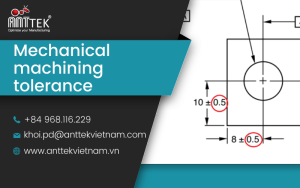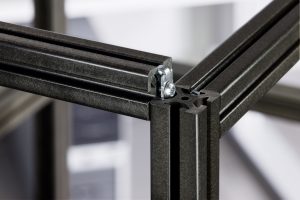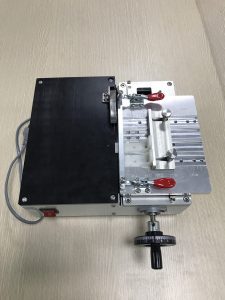Surface Treatment Types for Steel
Surface treatment for steel is an important process in steel production and processing, helping to improve material properties such as durability, hardness, corrosion resistance, and aesthetics.
Types of Surface Treatment for Steel
Galvanizing
– Hot-Dip Galvanizing: This is the most common galvanizing method. Steel is dipped into a bath of molten zinc at about 450°C. When the steel is removed from the bath, the zinc adheres to the surface and forms a uniform protective layer. This method is often used for products requiring high corrosion resistance, such as steel pipes, utility poles, and outdoor structures.
– Electrolytic Galvanizing: In this method, a zinc layer is applied to the steel surface through an electrolytic process, using an electric current to create a thinner coating compared to hot-dip galvanizing. Electrolytic galvanizing is suitable for products that require high precision and a smooth surface, such as automotive parts and household appliances.

Coating
– Powder Coating: This method uses powder paint that is electrically charged and sprayed onto the steel surface. The product is then heated to melt the powder and form a tough, uniform coating. Powder coating is commonly used for products that need high durability, scratch resistance, and weather resistance, such as metal furniture, bicycle frames, and household appliances.
– Oil-Based and Epoxy Paints: These liquid paints are sprayed or rolled onto the steel surface, creating a protective layer against corrosion from elements like water, chemicals, and air. Epoxy paint is especially favored in industrial applications due to its strong chemical resistance and high mechanical durability.

Coloring
– Blackening: This chemical process creates a black oxide layer on the steel surface, usually applied to tools and components that require high durability and non-reflective properties. The oxide layer enhances corrosion resistance and reduces friction between metal parts.

Heat Treatment
– Carburizing: This process adds carbon to the steel surface at high temperatures, increasing surface hardness while maintaining the core’s ductility. Carburizing is often used for machinery parts requiring high wear resistance, such as gears, camshafts, and screws.
– Quenching: After heating to high temperatures, the steel is rapidly cooled (quenched) to increase hardness. This method is suitable for applications requiring high strength, such as knives, cutting tools, and machine parts.
Grinding and Polishing
– Grinding: This process uses grinding stones or tools to remove surface material, flattening and shaping the steel surface. Grinding is commonly used in final machining stages to produce smooth, precise surfaces.
– Polishing: Polishing uses fine abrasives to create a shiny, reflective steel surface. This process is often applied to products needing high aesthetic appeal, such as jewelry, high-end household items, and interior details.
Benefits of Surface Treatment for Steel
Increased Corrosion Resistance
One of the most important benefits of surface treatment is improved corrosion resistance. Methods such as galvanizing, anti-corrosion painting, and chemical treatments create a protective layer that helps steel withstand environmental corrosion. This extends the steel’s lifespan, reducing maintenance and replacement costs.
Enhanced Hardness and Strength
Surface treatment methods like quenching or heat treatment can increase the hardness and strength of steel. This is crucial for applications requiring the steel to endure heavy loads, strong impacts, or harsh working conditions. Enhancing these mechanical properties helps steel perform better and prolongs product life.
Increased Wear Resistance
Some treatment methods, such as sandblasting, special coatings, or surface hardening, can improve steel’s wear resistance. This is important in industrial applications where steel is exposed to other materials or significant friction, helping reduce wear and maintain long-term performance.
Improved Accuracy and Surface Quality
Surface treatment can also enhance the accuracy and quality of the steel surface. Methods like precision machining, grinding, or polishing create smooth, high-quality surfaces that meet technical and aesthetic requirements, improving product performance and assembly.
Enhanced Adhesion with Other Coatings
Surface treatment can improve adhesion between steel and other coatings, paints, or materials. This not only improves bonding but also extends the life of coatings, ensuring they work effectively and do not peel or deteriorate.
Improved Mechanical Properties
Methods like quenching, heat treatment, or other thermal techniques can enhance the mechanical properties of steel, including ductility, tensile strength, and toughness. This helps steel meet technical requirements in structural and engineering applications.
Aesthetic Enhancement
Surface treatment not only provides technical benefits but can also improve the steel’s appearance. Methods like polishing, galvanizing, or coating can create shiny, smooth, and attractive surfaces, increasing the aesthetic value of steel products, particularly in decorative and architectural applications.
Anttek Vietnam – Comprehensive Surface Treatment Solutions for Steel
Anttek Vietnam is proud to be a leading provider in CNC design and processing, specializing in offering products with customized surface treatments. With many years of experience in design and jig processing, Anttek Vietnam has become a trusted partner for clients both domestically and internationally.
For more details, please contact:
- Factory: Lot 6, Lai Xa Industrial Park, Kim Chung Commune, Hoai Duc District, Hanoi City, Vietnam
- Hotline: +84 968.116.229
- Email: truong.nx@anttekvietnam.com
- Website: https://anttekvietnam.vn
Surface treatment types for steel are essential processes to ensure the quality and longevity of steel products. Each method has its own advantages and is chosen based on specific product requirements and usage environments. Selecting the right surface treatment method will enhance performance and minimize maintenance costs during use.
















